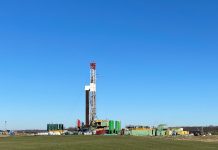WASHINGTON – Funny thing about averages, they rarely paint a true picture. It’s like standing with one foot in a bucket with boiling water and the other foot in a bucket of ice. On average, you should be comfortable.
December 2005 started with unusually cold conditions across much of the nation but ended with record heat and wildfires in the southern Plains and strong storms in the Far West.
‘Average’ weather. The nationally averaged temperature for the month of December was near the long-term average, according to the NOAA National Climatic Data Center in Asheville, N.C.
But, the Pacific Northwest and areas east of the Mississippi experienced colder-than-average temperatures, and the Southwest and northern Plains had warmer-than-average conditions.
The center also reported precipitation was at or near record low levels in the southern Plains and Southwest, while areas from central California to the Pacific Northwest were much wetter than average.
The global average temperature for December was ninth warmest on record.
Remember the cold? The average temperature for the contiguous United States for December was 33.5 degrees, identical to the 1895-2004 mean.
But, colder-than-average conditions covered much of the nation during the first half of the month, as upper-level winds steered Arctic air into the southern U.S.
A strong snowstorm moved across the Midwest and Northeast Dec. 8 and 9, and a damaging ice storm struck parts of the Southeast mid-month.
Then, atmospheric circulation changes during the last two weeks of the month brought a retreat of the Arctic air mass and put the country under the influence of warmer air from the Pacific.
Temperatures for the last week of December were more than 15 degrees F above average in areas of the northern Plains and West, which had experienced extremely cold conditions in early December.
Areas with drought. Unusual warmth in the southern Plains combined with a continuing lack of rainfall to create severe drought conditions across eastern Oklahoma, parts of Texas and Arkansas.
For the year, many locations in this region received less than 70 percent of their average annual precipitation. Little, if any, precipitation fell during the last three months of the year, and October-December was the driest such period on record in northeastern Texas, southeastern Oklahoma and much of Arkansas.
Daytime highs were in the upper 70s and 80s, with strong winds and extremely dry conditions. This led to extensive wildfires that destroyed homes and businesses and caused several fatalities in Texas and Oklahoma as more than 300,000 acres burned.
This was part of a record-setting 8.6 million acres nationally lost to wildfire in 2005, according to preliminary data from the National Interagency Fire Center.
Areas with flooding. By contrast, a series of strong Pacific storms moved across the West Coast in late December. The largest rainfall totals since 1997 occurred in many parts of northern California and Oregon, leading to damaging floods and mudslides.
Snow fell in the highest locations of the Sierras, while rain fell in many mid-elevation locations that had received snow in early December.
In a reversal of the dry conditions observed during the 2004-05 winter season, average-to-above-average snowpack levels covered northern Colorado to northern California and parts of the Pacific Northwest, producing a good start to the water year (October-September) for these areas.
No snow. Conversely, very dry conditions in the mountains of southern Colorado, New Mexico and Arizona left many locations with at-or-near record low snowpack at the start of 2006.
More than 90 percent of reporting stations in Arizona, the most in at least 40 years, were snow-free Jan. 1.
Get 4 Weeks of Farm and Dairy Home Delivered









